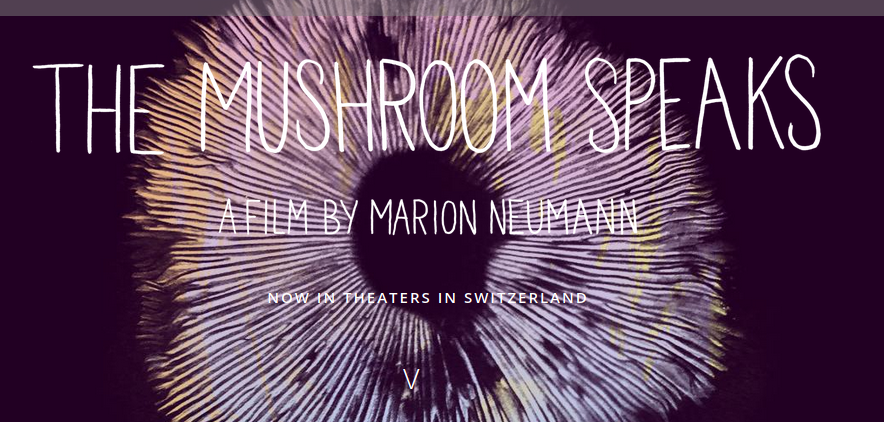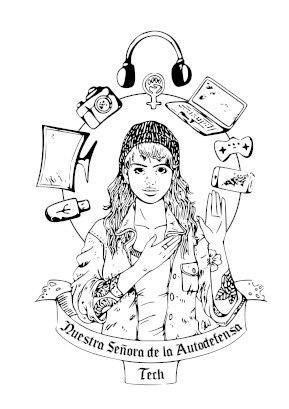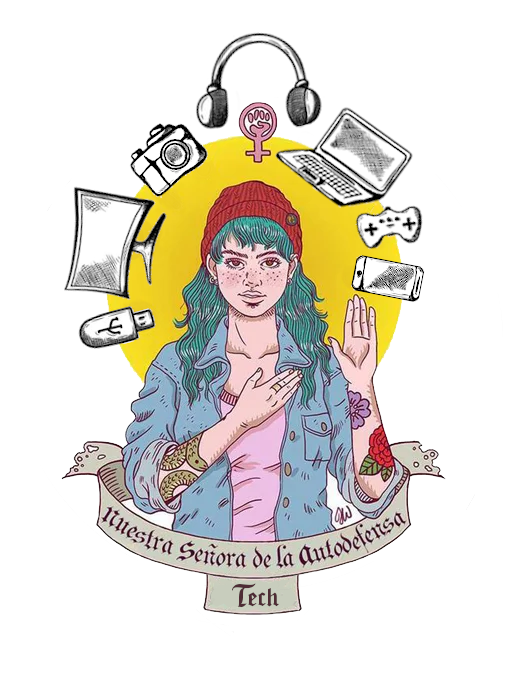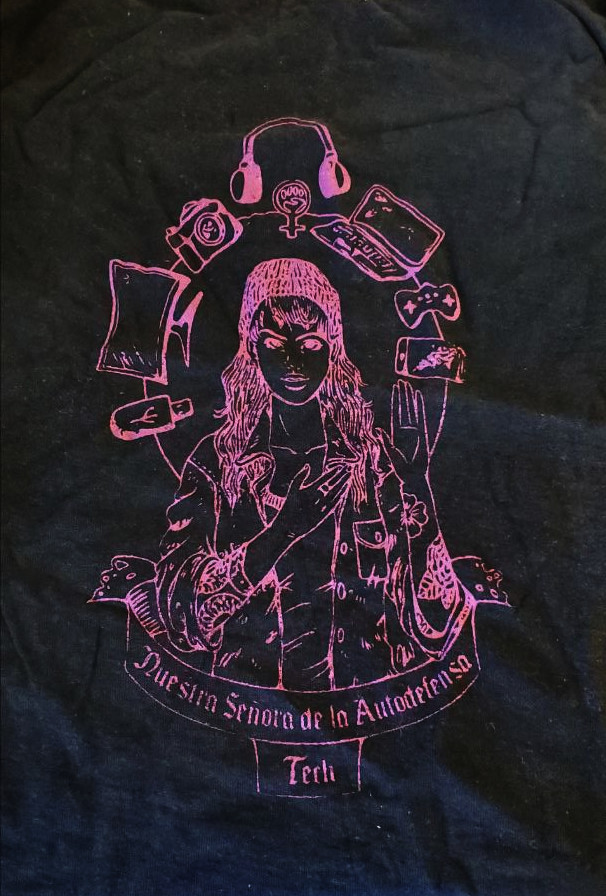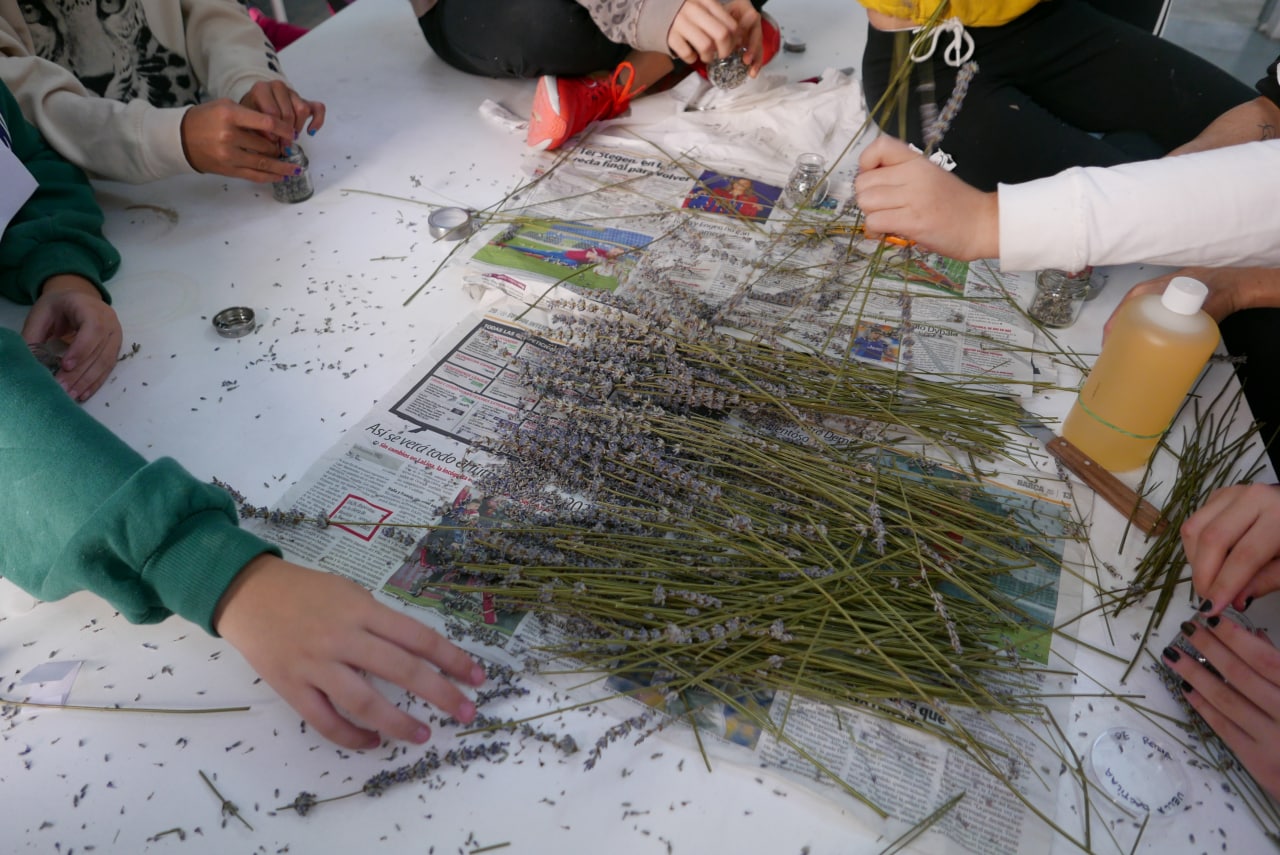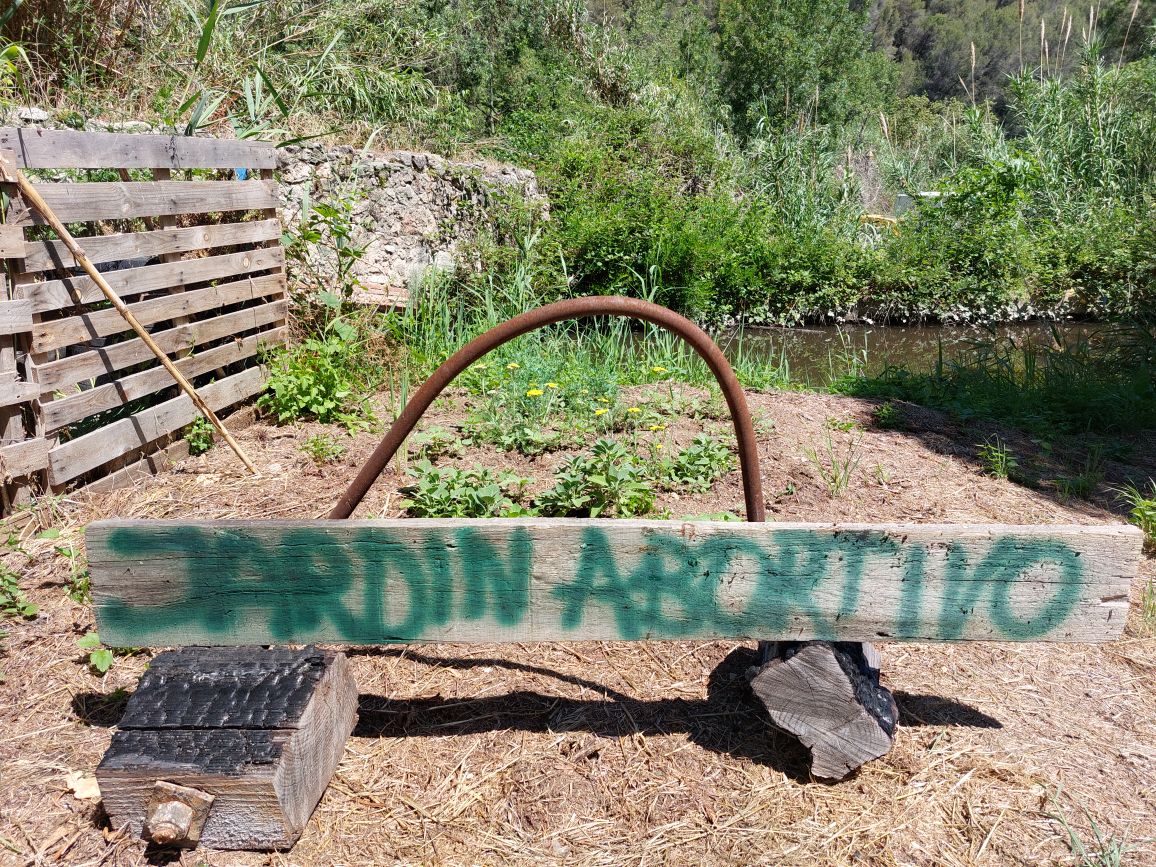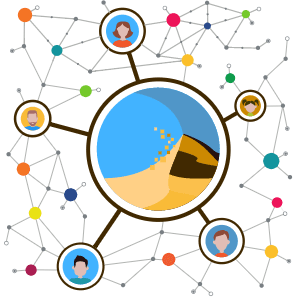This workshop is inspired by restorative practices and collective reapropriation of our conflicts.
I will take place in two parts, ideally of 2/3 hours each:
– the first part is an intro to restorative systems, ie to the way we take care of conflicts in our communities.
– the second is an intro to restorative circles, a collective approach to conflict care, with the help of either existing conflict or by using a tale we really don’t like and use it as a base for a simulated restorative circle.
Ideally, the participants of the 2nd workshop would have taken part of the 1st one and the circle would be 12 participants maximum.
Language: English
Notes
This workshop took place in many iterations, and was the occasion of several iterations of questions about how to reown our conflicts*, and move away from punitive, shaming and binary habits and choose collective ways to respond to harm.
Here are the notes of two of the workshops. 2 other informal workshops took place, with no notes taken.
I. OWNING OUR CONFLICTS (CONFLICT.OS PART I, Artemisia)
We took a large understanding of conflict, that almost always incompass, structural violence and look at the mutual and lateral harm resulting of the culture with been brought in. At the same time, this approach, developped in the favelas of Brazil, recognize that we also already have wisdom around how to react to conflict and harm, and that it can empower us at the condition that we choose it collectively.
1.1. Seeing ourselves in community
We were about 5 participants= living in different parts of the worlds (Brazil, Germany, Austria, Canada, France) and started with a round of discussion around the place of conflicts in our communities by discussing those propositions : Communities are not primarily made up of those with whom I identify but of those with whom I share resources (material and emotional), with whom I share risks and with whom I persist.
Conflict is feedback within any system (organism, relationships, organization, society…) that seeks to preserve its form and which inform us that something has changed or needs to change
I am in community with those with whom I am in conflict
Conflict increases its volume to compensate for the perceived distance between those who are part of the conflict.
Security increases when we walk toward conflict.
Among the things that came up were the importance of recognize our capacities, and prepare for learning from what’s happening, and grieving to, for what is too big for us.
We talked of the tyranny of structurelessness and how lac of chosen (infra)structures or methodologies can foster conflicts, but also, how it applies to conflicts and structural harm, ie when we have not collectively chosen how to reply to harm,t there is more chance to create more harm.
A participant remember In sociocraty, we try to make feedback not personal anymore.
After that discussion, we answered three fonfamental questions:
1.2. Nurturing the restorative flame in our communities
Our relationships include an organized response to conflicts, a justice system, inherited if not consciously chosen.
—–
Legend
We made a little Legend to respond to those questions
∆ personal propositions
o collective or structural propositions
1.2.1 What do we currently do when conflicts become painful that works well ?
∆ When someone is hurting, respect personal time to rest and heal.
o In case of interpersonal conflicts, involve someone else who loves them both
o Get exercise / stay in bed, don’t drink/enjoy drinking
∆ Give people space/ give people a loving push when they need it
∆ Make feedback collective, not personal
∆ Share responsibilities for expressing needs/for giving support
∆-o If you can’t solve, try to dissolve
1.2.2. What do we currently do that doesn’t work so well?
Assigning blame
Judging who is right and who is wrong
Hiding from conflicts for ever
Letting inner and interpersonal conflicts growing and freezing/paralyzing us
Meetings for mutual feedback are taking a lot of times and we tends to postpone them sure to workload
Let 2 people solve themselves a pb (if in a group) without acknowledging as a group
using spread-sheets email, tech in general to try to solve conflicts
do nothing
putting one person in charge of dealing with all the conflicts
1.2.3. How do we dream it could be?
Have more free time to deal with conflicts for ex: money or regular income
Allowing ourselves the freedom to make mistakes
Having people open to learn/making learning desirable
A support network for things we can’t deal with alone (addiction, sexual abuse, structural violence… )
Emotional support network
Know how/Remember asking for help
Accessibility to therapy for personal & collective ways of healing
II. BRING YOUR OWN CONCLICTS (Conflict.os part 2 (Camping))
This second part was intending at practicing a restorative circle with an existing conflict, that affected one of us but not happening at THF.
In this 2 part, we were about 5-6 people again, all different from the 1st part of the workshop. exept one participants and we did a summary of the 1st part of the workshop. We discussed in dept what happen in (not always so) BiPOC queer feminist trans communities
While looking at the 5 propositions, some reflexions came up such as:
If our response to conflict is exclusion, then that is violent again. Call out and cancel culture is often harming us.
If we talk of “toxic people”, we are already putting a label on someone and that is a preparation for exclusion. this is not going to help transformation
some prefer to talk of “toxic behavior”, so we focus less on the person but on what is toxic in particular.
It was also suggested that instead of naming a behavior toxic, says what s exactly harmful and how it is affecting.
After discussing the 5 propositions to look at ourselves in communities, we choose a conflict to practice together a semi simulated circle.
2.1. Semi-simulated circles
Semi-simulated circles are an opportunity to practice facilitation. They can also be valuable learning for all participants in the circle.
– It s good to work with groups of 4 or more with a conflict that is alive and active for one of the community members. It s recommanded to focus on the practice of facilitation rather than accompanying someone in a short conflict is made easier by not taking a conflict that involves someone else in space.
– The facilitator will make a circle with the participant for whom the conflict is alive. In the pre-circle, they identify a simple act, which fits into a sentence. It may be useful to identify an act for which the participant is the author or recipient.
Fictitious names may be used, for which it has been clearly identified who is the author, the recipient and the members of the community.
– In the circle, the participants do not engage in bad faith, nor in an imitation or an exaggeration. They come as they are, and as if they had participated in a particular act. Focus on the facilitation practice, staying in the flow of the circle rather than looking at how the participants are real or not.
– Use the process of mutual understanding, self-responsibility and agreed action. When we arrive at the agreed actions, remember that no action plan would really be carried by the participants.
Restorative questions : These questions are intended as a guide for you when you begin to offer facilitation pf restorative circles. It is recommended to use the questions as described below for at least your first 20 restorative circles, until their logic in this context is clear to you in the context, and be freely and precisely adapted for the people and situation at hands
2.2 Pre-circles
2.2.1. Identify the act :
Intention: To find a simple, clear and consensual key act.
To the first participant (initiator of the circle)
“What has been said or done that you would like to bring to a restorative circle?”
possible colloquial adaptation: How are you? What happened? Why are we here?
To the other participants:
“What has been said or done that leads you to be invited to this restorative circle?”
2.2.2 Understand the meaning:
Intention: To emphatically connect to the person’s current experience of the act, in their own words, in their own language. Seek to be touched and transformed by what you hear rather than to understand it cognitively.
While there is no particular way to do this, a guiding form could include questions that relate to:
– the meaning of the act
– the needs or underlying values stimulated in the participant by the act in question
– the feelings, thoughts and images that comes from it.
You can also try to understand by rephrasing or trying to translate emphatically:
« Do you feel … (words or images describing feelings) … because ___ is really important, because you need __» (words or expressions describing needs or values)?
2.2.3. Share the process and agree on a supportive context
Present the proposed process – basic steps, dialogue and key principles
– Pre-circles
– Hear the meaning of what happened, for everyone.
– Inform about the process
– Know who should be there
– Confirm understanding and consent
– Circles:
– Dialogical process (reformulation of each intervention by a chosen/an other participant, for mutual understanding and so everyone feel heard and understood)
– 3 steps: (present-rehumanization / past-responsabilization / future-agreed actions)
– Post-circle: to check the agreed actions
Seek support of other affected members
Who: « Who needs to be there?»
Where: Look for a quiet and meaningful place + check if special needs.
2.2.4. Confirm understanding and consent
« Do you have any questions ? » « Are you willing to go ahead ? »
2.3. Facilitator’s pre-circle
(Note: These questions can be asked as is by anyone – a friend, an acquaintance, or by the co-facilitator to the facilitator. They help prepare, observe what may be more fragile, find support and make sure the facilitator feels prepared and ready to go ahead.)
2.3.1. Identify concerns/ideas
“What idea or ideas do you have of yourself, the process or the other participants that diminishes your ability to focus on the humanity of everyone involved?”
2.3.2. Understanding the meaning
Connect with the underlying needs or the values stimulated by the facilitator in relation to his ideas, feelings, thoughts and images. Verbally verify your understanding in case of doubt or at the request of the facilitator. Seek less to “hear with precision” than to be touched and transformed by what is shared.
2.3.3 Confirm willingness to participate
“When you look at the steps you are going to take, is there something that comes
for which you think you need support? ”
“Do you know what you want to do to organize this support?”
“Do you want to go ahead?” (Achieve understanding and consensus.)
2.4 Dialogue process used in the circle
2.4.1 – Mutual understanding (- present)
The facilitator asks person A
« What would you like known and by whom, about how you feel now, related to the act / what happened and its consequences? »
Person A speaks to Person B and responds (in natural language)
The facilitator asks person B:
« What did you hear? »Or « What is the essence of what you heard? »
Person A speaks to Person B and responds
(note: if Person A speaks to everyone, someone rephrases it so that A feels understood)
The facilitator asks person A: « Is that it? » Then « Is there more? »
Repeat the same sequence with another person in the circle.
2.4.2. Personal responsibility (- past)
The facilitator asks Person A, “What would you like known and by whom about what you wanted to do when you did / said what you did / said?”
Person A speaks to Person B and responds
The facilitator asks person B: “What did you hear?” Or “What is the essence of what you heard? ”
Person A speaks to Person B and responds
The facilitator asks Person A, « Is that it? » Then « Is there more? »
Repeat with another person
Note: The discussion sometimes navigates organically from the present to the past … Follow the dynamics of what is said. When you feel a mutual and collective understanding of the complexity of the present and the past, (something in the hearts has melted) it is time to move towards the future.
2.4.3. Agreed action (- future)
“What would you like to see happen next?”
“What would you like to offer?” “What would you like to request?”
Note: Take notes of specific actions (invite clarity and precision). Send them to the group.
2.5.Post-Circle
Investigate participants’ well-being
– “What would you like to know and by whom, how would you compare to the action plans and their consequences?”
Participate in :
– Celebration (when the needs have been met mutually), or
– Resignify (when the actions completed do not meet the needs), and / or
– Understanding, planning (when needs have not been met
